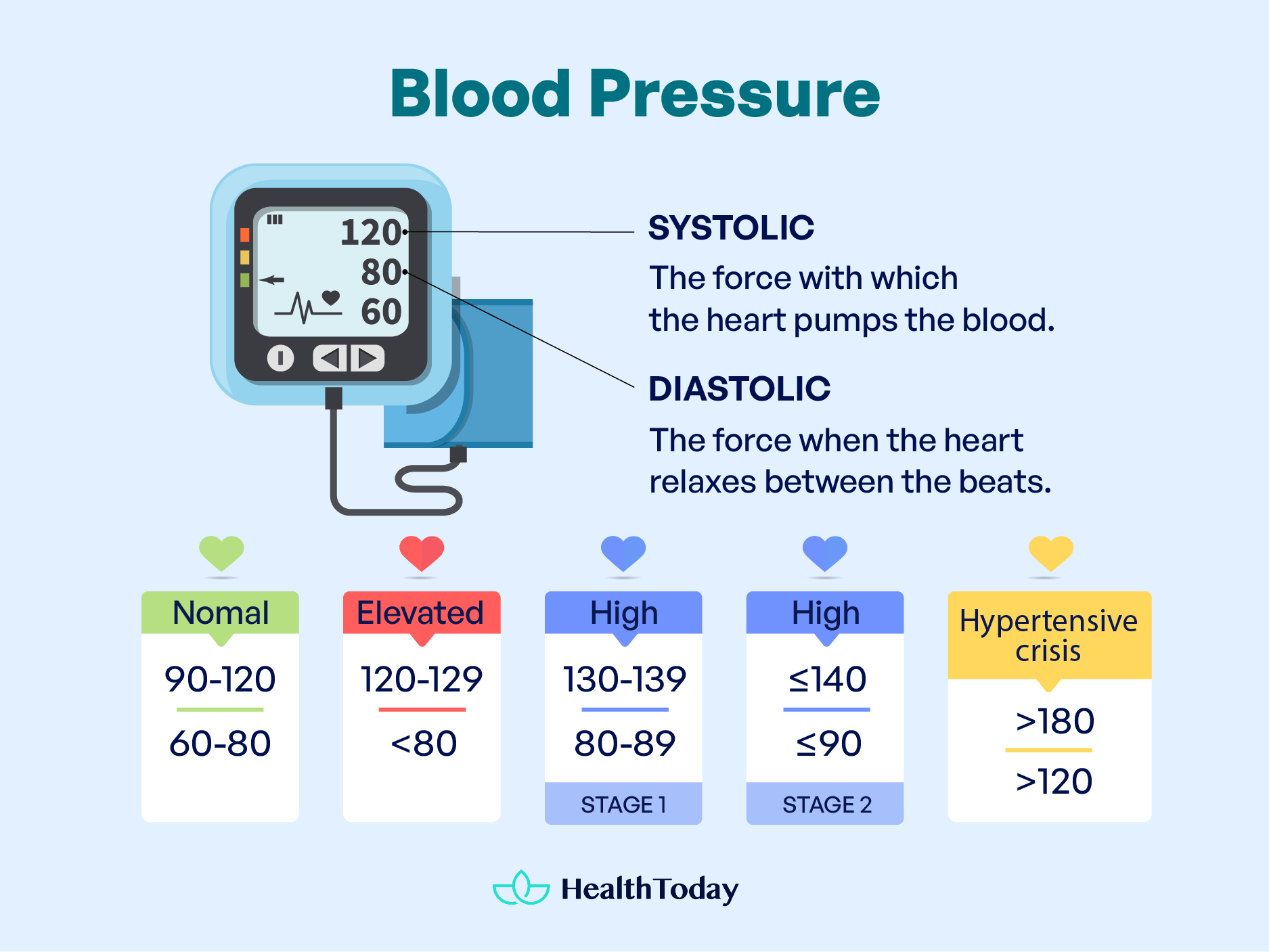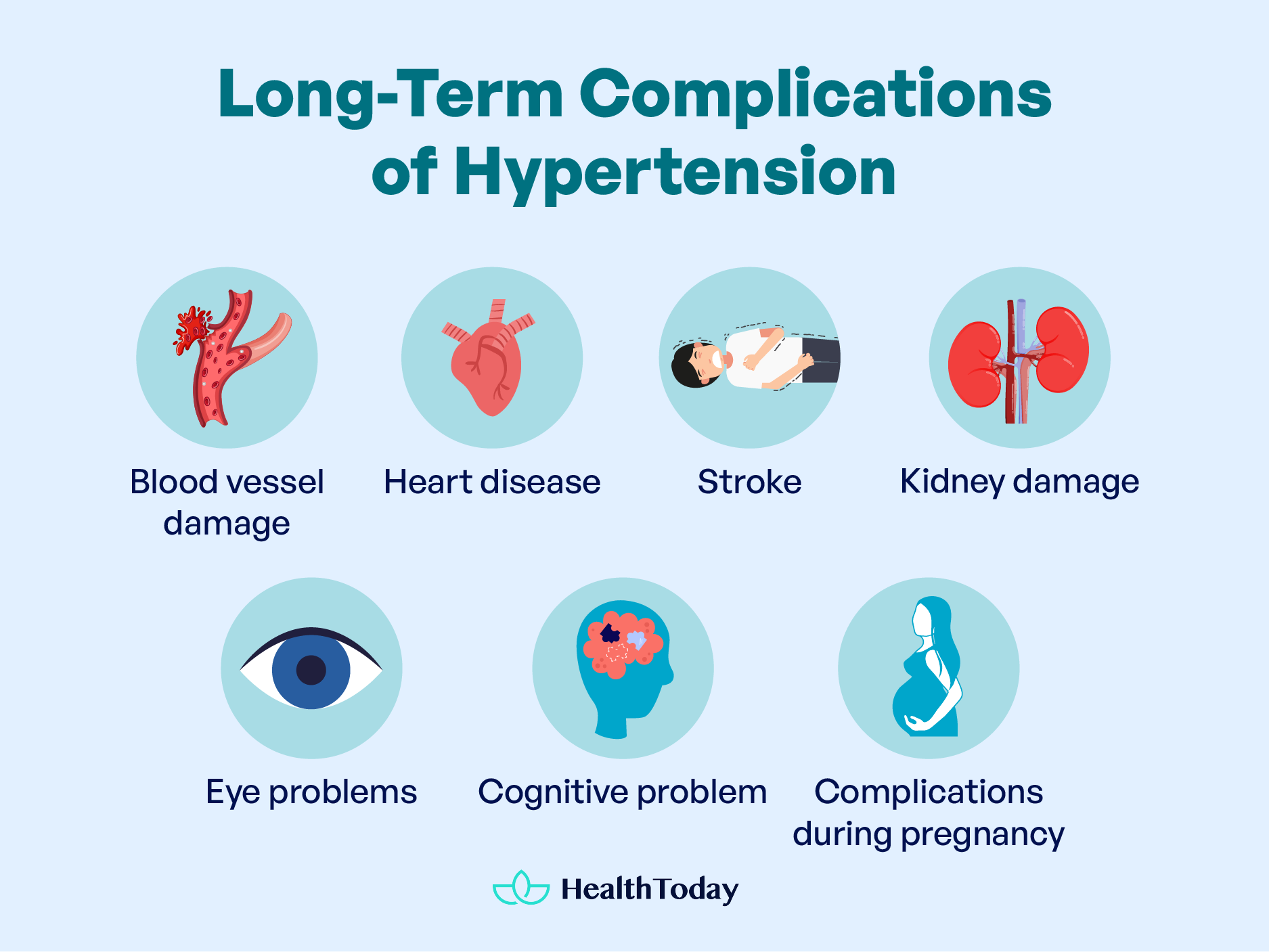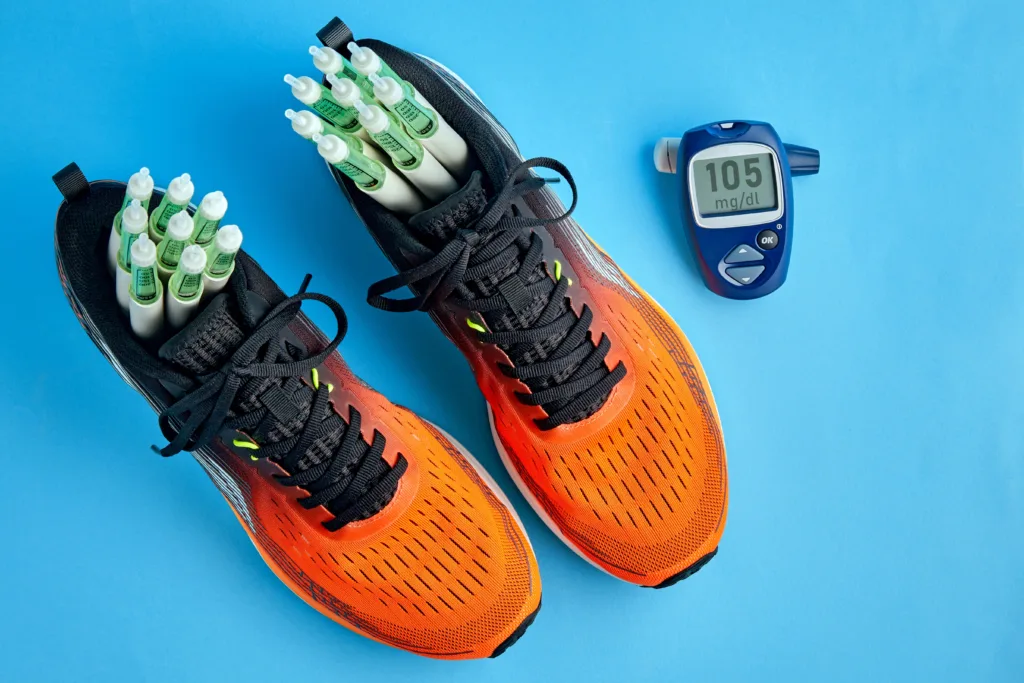Table of Contents
Blood pressure, a vital indicator of cardiovascular health, gives us insight into the force that blood pushes against the walls of our arteries. When we encounter readings such as 153/97 or 142/79 blood pressure, we commonly have concerns and questions about its impact on our health. It is essential to understand that a single measurement value, or even a reading after exercise, does not provide a clear diagnosis of hypertension, also known as high blood pressure.
In this article, we will explore how to properly interpret blood pressure numbers, understand the different states of hypertension, analyze the associated risks, discuss strategies to lower blood pressure naturally, address prevention methods, and offer dietary advice to avoid hypertension.
142/79 blood pressure and 153/97 blood pressure: What do they indicate about your health?
When evaluating blood pressure values, physicians focus on more than just the number to establish a diagnosis or assess cardiovascular risk. A value such as 153/97 can have very different meanings depending on the context.
For example, a measurement of 153/97 immediately after doing exercise is not the same as a person had rested for 30 minutes. A reading of 142/79 is different for a healthy individual, without pain and in good physical condition, as it is for another patient with the same value but who is also diabetic, overweight, and has an unhealthy diet.
Following the American Heart Association guidelines (AHA), values above 140/90 indicate stage two hypertension (1). However, it is critical to understand that a single measurement does not determine whether someone is hypertensive. Therefore, regular measurements are required to obtain more accurate and consistent values. A medical provider may ask you to have several measurements at different times of the day over a week before diagnosing someone with hypertension.
It is essential to pay attention to blood pressure readings such as 142/79 or 153/97, as maintaining these values over time could trigger complications, especially if you have any disease such as diabetes or high cholesterol. For this reason, periodic check-ups are recommended to take preventive measures.
How to read the blood pressure number
Reading blood pressure involves understanding two key numbers: systolic and diastolic. The pressure is measured in millimeters of mercury or mm Hg.
- Systolic pressure (the top number): This is the higher of the two numbers and represents the force of blood against the artery walls when the heart beats or contracts. It’s the maximum pressure in your arteries.
- Diastolic pressure (the bottom number): This is the lower number and indicates the pressure in the arteries when the heart rests between beats. It represents the minimum pressure in your arteries.
When you see a blood pressure reading, such as 120/80:
- The “120” is the systolic pressure.
- The “80” is the diastolic pressure.
The measurement of blood pressure is carried out through a device called a sphygmomanometer, which consists of an inflatable cuff placed around the arm, a pressure gauge for reading, and a bulb or pump for inflating the cuff, along with a stethoscope. Currently, there are automatic devices that simplify this process, but they must be medically validated to ensure accuracy.
Measuring blood pressure is a relatively simple procedure and consists of the following steps:
- Wrap the cuff around the arm, just above the elbow. The cuff is placed over the major artery of the upper arm called the brachial artery.
- Place the stethoscope between the skin and the cuff, over the brachial artery
- Inflate the cuff while observing the pressure gauge and continue until the needle reaches approximately 30 mmHg above the expected reading.
- Subsequently, the gradual deflation of the cuff is performed by releasing the air slowly while listening through the stethoscope. The first tapping sound (Korotkoff sound) indicates the systolic pressure (maximum value), and when this sound ceases, the diastolic pressure (minimum value) is recorded.
It is crucial to follow certain guidelines to obtain accurate measurements. Avoiding physical exercise, consuming caffeine, or smoking at least 20 minutes before the measurement is essential. It is recommended to take two readings separated by five minutes, and the higher value of both measurements is considered a more reliable result. Patients need to be relaxed, have legs uncrossed, be hydrated, and keep their arms relaxed to obtain accurate readings.
Understanding blood pressure readings

To facilitate the study and administration of appropriate treatments, the American Heart Association (AHA), in its latest update guideline, classifies blood pressure according to the following values (1):
Optimal blood pressure. Optimal blood pressure is typically defined as less than 120/80 mm Hg, with values above 90/60 mm Hg considered normal. Below 90/60 mm Hg is classified as hypotension.
Elevated blood pressure. Blood pressure is considered elevated when the systolic reading is between 120-129 and the diastolic is less than 80.
- Stage 1 hypertension: The initial hypertension stage is characterized by a systolic pressure between 130-139 or a diastolic reading between 80-89.
- Stage 2 hypertension: The advanced stage of hypertension is identified by a systolic reading of 140 or higher or a diastolic reading of 90 or higher.
- Hypertensive crisis: A hypertensive crisis is identified by a systolic reading greater than 180 and/or a diastolic reading greater than 120. In these cases, patients require immediate medication adjustments if there are no other problems or urgent hospitalization if there is evidence of organ damage.
It is important to be aware of blood pressure values to know when to consult a physician or take immediate action. Understanding these values provides crucial information about cardiovascular health and allows quick decisions to prevent complications.
What is stage 1 hypertension?
As mentioned above, stage 1 hypertension is characterized by a systolic pressure ranging between 130-139 and/or a diastolic pressure between 80-99. These numbers can be associated with what physicians call “white coat hypertension,” a term that reflects anxiety generated during doctor visits, which causes a reactive rise in blood pressure. However, “white coat hypertension” can still be associated with an increased risk of developing certain cardiovascular problems compared with people who have optimal blood pressure (2).
In stage 1 hypertension, doctors usually suggest patients follow up for seven days, where several measurements are documented. In addition, the physician may provide an automatic blood pressure measuring device for the patient to wear during the follow-up period. This strategy helps the physician obtain more accurate readings and arrive at an accurate diagnosis as to whether the individual has this disease.
What are the risks of being in this range?
Type 1 hypertension can have significant health complications if not properly managed and controlled. These risks, for the most part, manifest over the long term, as opposed to hypertensive crises or emergencies, which are short-term events.
Long-term complications of hypertension depend on several factors, such as coexisting diseases (e.g., diabetes, renal failure), duration of hypertension, effectiveness of treatment, and implementation of lifestyle changes combined with pharmacological treatment.

Some long-term complications include (3, 4, 5, 6, 7, 8, 9, 10, 11, 12, 13):
- Blood vessel damage: High blood pressure weakens blood vessels, increasing the risk of atherosclerosis, which involves fat accumulation in the arteries.
- Heart disease: Hypertension is one of the most common causes of heart failure, coronary heart disease, and heart attacks.
- Stroke: High blood pressure is a major risk factor for stroke, as it can cause blood clots to form or rupture blood vessels in the brain
- Kidney damage: The combination of high blood pressure and diabetes is one of the main causes of kidney failure.
- Eye problems: Uncontrolled blood pressure increases the risk of eye problems, such as hypertensive retinopathy.
- Cognitive problem: Several studies have linked hypertension to an increased risk of cognitive impairment and dementia in the early stages.
- Complications during pregnancy: Hypertension in pregnant women can lead to complications such as pre-eclampsia and even more serious situations such as multi-organ damage.
Those with a history of cardiovascular disease, diseases such as diabetes, hypercholesterolemia, and kidney disease need to maintain rigorous control of hypertension to improve their quality of life.
Hypertension, if uncontrolled, poses significant long-term health risks, including blood vessel damage, heart disease, stroke, kidney damage, eye problems, cognitive impairment, and complications during pregnancy. These risks are influenced by factors such as coexisting conditions, duration of hypertension, and efficacy of treatment.
Maintaining strict control of hypertension is especially important to improve the quality of life for everyone, but even more so for people with a history of cardiovascular disease, diabetes, hypercholesterolemia, or kidney disease. Regular follow-up, lifestyle changes, and effective medical intervention are essential to reduce the risk of these complications.
Preventions to avoid hypertension
Lowering or stabilizing blood pressure naturally involves starting a healthy lifestyle. Here are some changes that can be simple and beneficial to stabilize blood pressure and avoid hypertension (14):
Eat a healthy diet
The famous DASH diet (Dietary Approaches to Stop Hypertension) is designed to lower blood pressure.
Limit salt intake
AHA suggests limiting daily salt intake to less than 2,300 mg, ideally less than 1,500 mg (15). Cooking your meals also helps to avoid processed foods with a lot of sodium.
Be physically active
Spend at least 150 minutes a week on moderate aerobic exercise, such as walking, or 75 minutes on vigorous exercise, such as running or swimming. You can also add muscle-strengthening activities at least twice a week (14).
Quit smoking
Smoking (or any nicotine-containing product, including vaping or chewing tobacco) affects cardiovascular systems. Smoking releases many harmful chemicals into the bloodstream, which causes an immediate increase in blood pressure. Over time, continued exposure to these substances damages blood vessel walls, promoting the development of atherosclerosis and increasing the risk of heart disease and stroke (3).
Smoking cessation is a fundamental step to improve overall health and reduce the negative impact on blood pressure. It is recommended to seek advice from health care professionals on personalized smoking cessation strategies.
Adequate rest
Multiple studies suggest poor sleep may contribute to increased blood pressure (15). It is essential to prioritize restful sleep. It is important to dedicate 7 to 9 hours a day to a good night’s rest.
To improve the quality of sleep, it is essential to avoid stimuli such as electronic devices (cell phones, televisions) and to turn them off at least 30 minutes before bedtime. We also recommend abstaining from caffeine in the evening and having an early dinner.
By making small changes in our daily habits, we can naturally prevent or stabilize high blood pressure levels. Adopting a healthy, low-sodium diet, quitting or reducing smoking (including all tobacco products, including vape products and chewing tobacco), and maintaining a physically active lifestyle are essential for the proper prevention of hypertension.
Suggested diet for people with stage 1 hypertension
The most recommended and scientifically supported diet for hypertensive patients is the DASH (Dietary Approaches to Stop Hypertension) Diet, specifically designed to prevent and control high blood pressure (16).
This nutritional approach focuses on an abundant intake of fruits, vegetables, whole grains, and lean proteins such as chicken and fish. In addition, it limits the consumption of ultra-processed foods, such as sausages, and seeks to reduce the intake of sodium-rich foods, such as red meat, and products with added sugars.
Another valuable option is the Mediterranean diet, traditionally practiced in countries such as Italy, Spain, and Argentina (17). This diet is characterized by including fresh foods and essential nutrients, especially the use of olive oil and the replacement of salt with herbs and spices. It also encourages the moderate consumption of wine during meals, among other healthy aspects.
It is crucial to highlight that beyond rigorously following a diet, the key is to adopt healthy eating habits sustainably. Incorporating these dietary habits can not only help control hypertension but also promote long-lasting overall health.
Is 142 considered high blood pressure?
A blood pressure value of 142 mmHg sustained over time indicates type two hypertension, according to the American Heart Association.
Is 142 over 79 high blood pressure while pregnant?
During pregnancy, blood pressure values should be closely monitored. Two measurements higher than 140 within six hours of each other indicate hypertension in pregnancy. You must consult your doctor, to lead a safe pregnancy.
Is 79 diastolic high?
A diastolic of 79 is considered within the normal range. However, physicians often use both diastolic and systolic pressures to determine if hypertension is present.
Can drinking water lower blood pressure?
Chronic systemic hypohydration is a pathogenic factor in hypertension, venous thromboembolism, fatal coronary artery disease, and stroke (18). Having proper water intake, low sodium intake, and regular physical activity help to normalize blood pressure values.
Summary
Understanding blood pressure readings involves more than just the numbers on the cuff; it’s about context. Values such as 142/79 or 153/97 need to be interpreted integrally, considering factors such as activity level, general health status, and lifestyle. Isolated measurements do not define hypertension; regular follow-up, adherence to guidelines, and a comprehensive approach are crucial for accurately assessing cardiovascular health.

















Comments
0